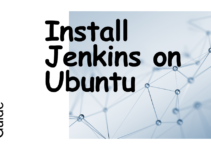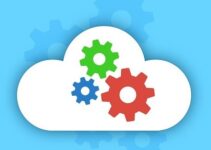In this article, we’ll explain how software maintenance provides Continuity Of Service To Users. Each and every youngster in today’s world is familiar with the software, and since it has become commonplace, there is no question about how valuable and essential it is in everyday life.
When it comes to software maintenance, it refers to the transformation of a software product after it has been delivered in order to correct errors, or it may refer to the upgrading of a software product in order to increase its performance and effectiveness.
There are a variety of perspectives from which to approach software maintenance. For example, it may be from the perspective of bug fixing, which is to say, the maintenance and repair of faults. Another part of maintenance is the implementation of modifications in response to advancements in technology as well as changes in the needs of the operating environment. In addition to offering aid and support to end-users, maintenance might imply other activities.
What is the significance of software maintenance and support services? The basic reason for this is to ensure that consumers continue to get uninterrupted service. The unexpected failure of systems may be life-threatening, as is the case in the aviation sector, among other industries. It goes without saying that a system breakdown or a software malfunction may cause a company to lose hundreds of thousands of dollars in a single day. Second, changes in government and tax rules, as well as technical and legal advancements, need the upgrading of system software and hardware. Additionally, the more user-friendly a program is, and the more it caters to all demands and requirements, the more likely it is that users will become loyal to the software. As a result, these are only a handful of the many reasons why software maintenance is required.
Challenges that arise during software maintenance
The high cost of software maintenance and evolution, as well as the glacial pace with which it is implemented, distinguish them. According to the results of the survey, about 60% of the system reliability was spent on the entire cost of the software. However, after the program has been delivered to the customer, the maintenance effort starts. There are many challenges that arise during software maintenance, including database size, system age, upkeep budget, system size, personnel size, and restructuring for change. This article discusses numerous strategies for lowering the costs and labour associated with software maintenance. A well-defined, properly documented software architecture, as well as the creation of an environment that fosters design coherence and testing quality via the use of guidelines, may greatly minimize software maintenance and support services expenses.
Various kinds of software maintenance
Software maintenance may be classified into four categories based on the rationale for its existence and the purpose for which it is performed:
- Remedial software maintenance is concerned with the removal of defects, flaws, and mistakes as soon as they are discovered.
- Performing adjustments, modifications, and updates to the software in order to avoid potential issues in the future, but also in order to make the program simpler to scale and operate in the long term is known as precautionary software maintenance.
- According to changing customer demands and input, perfective software maintenance involves introducing new features and deleting some of the less-effective ones from existing software products.
- Adaptive software maintenance is concerned with adapting software to changes in its environment (for example, modifications in the computer system), as well as to changes in business policy or legal requirements, among other things.
What is the purpose of software maintenance?
Several factors necessitate the need for software maintenance, which are described below:
1. Fixing ‘bugs’
The most significant aspect of the service is the rectification of mistakes, or in other words, the elimination of ‘bugs.’ It is critical that the program runs smoothly and without interruptions. We propose that you make this assignment a top priority.
Aspects of this procedure include the search for and repair of coding mistakes. Hardware failures, operating system failures, and software failures may all occur at any time. This should be done without compromising the functionality of the remaining features of the present program. a
2. Increasing the number of opportunities
This portion of the service is critical for upgrading the present functionality and making the system more adaptable to changing environmental conditions in the future.
This includes enhancing the capabilities of programs, work patterns, hardware upgrades, compilers, and any other parts of the system that have an impact on the workflow. Increase the performance of your system by using a technically up-to-date solution and utilizing software maintenance services on a regular basis.
3. Disable any functionalities
Functionalities that are no longer in use and take up unnecessary space in the solution actually degrade the overall performance of the system in the long run. As a result, it is required to deactivate any functionalities that are no longer needed. It is necessary to eliminate certain user interface and code features in order to implement new functionalities that are compatible with the current tools and technologies.
4. Improving the overall performance
Increasing the efficiency of the system is necessary in order to fulfill new criteria. Software maintenance includes data and encoding limitations, as well as reengineering and refactoring. As a result, the solution is not exposed to vulnerability. This is not a feature that is used in operations, but rather a feature that is being developed to prevent destructive behaviors such as hacking.









